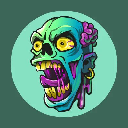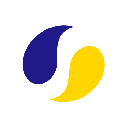-
 bitcoin
bitcoin $122025.899241 USD
-2.12% -
 ethereum
ethereum $4488.068729 USD
-4.11% -
 bnb
bnb $1315.348019 USD
8.65% -
 tether
tether $1.000457 USD
0.03% -
 xrp
xrp $2.875326 USD
-3.69% -
 solana
solana $222.043604 USD
-4.07% -
 usd-coin
usd-coin $0.999682 USD
0.00% -
 dogecoin
dogecoin $0.249887 USD
-5.62% -
 tron
tron $0.337379 USD
-2.59% -
 cardano
cardano $0.827763 USD
-5.06% -
 hyperliquid
hyperliquid $45.774531 USD
-2.43% -
 chainlink
chainlink $22.079309 USD
-5.87% -
 ethena-usde
ethena-usde $1.000156 USD
0.02% -
 sui
sui $3.482566 USD
-3.57% -
 stellar
stellar $0.386982 USD
-4.92%
Is VWAP useful near the limit down board? How to judge the board funds?
VWAP helps traders assess if a security's price near the limit down board is overreacting or stabilizing, aiding in informed trading decisions.
May 21, 2025 at 09:57 pm
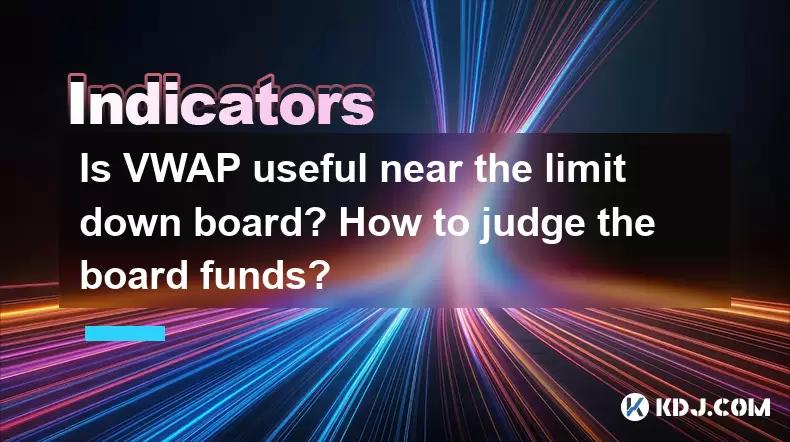
Understanding VWAP and Its Application Near the Limit Down Board
The Volume Weighted Average Price (VWAP) is a trading benchmark used by investors to gauge the average price at which a security has traded throughout the day, based on both volume and price. It is particularly useful for traders looking to assess whether a security is being bought or sold at a favorable price. When it comes to trading near the limit down board, VWAP can provide crucial insights into market dynamics.
In the context of a limit down board, VWAP becomes even more significant because it helps traders understand the average price at which the security is being traded amidst heavy selling pressure. A security reaching its limit down board indicates that it has hit a predetermined lower price threshold, often triggering a halt in trading to prevent further panic selling.
To effectively use VWAP near the limit down board, traders should monitor how the current price compares to the VWAP. If the current price is significantly below the VWAP, it suggests that the selling pressure is intense, and the market might be overreacting. Conversely, if the price is closer to the VWAP, it may indicate that the selling pressure is easing, and the price could potentially rebound.
Calculating VWAP Near the Limit Down Board
Calculating VWAP involves a straightforward formula, but its application near the limit down board requires careful consideration. The VWAP is calculated as follows:
[ \text{VWAP} = \frac{\sum (P_i \times V_i)}{\sum V_i} ]
Where:
- ( P_i ) is the price of the trade.
- ( V_i ) is the volume of the trade.
When a security is near the limit down board, the volume of trades can be extremely high, and prices can fluctuate rapidly. To accurately calculate VWAP in this scenario, traders should:
- Use real-time data feeds to capture the most current trades.
- Ensure that the data includes all trades executed up to the current moment, even if the security is close to the limit down board.
- Regularly update the VWAP calculation to reflect the latest market conditions.
Interpreting VWAP Movements Near the Limit Down Board
Interpreting VWAP movements near the limit down board can be challenging but essential for making informed trading decisions. If the VWAP starts to decline rapidly, it indicates that the average price at which the security is being sold is decreasing, suggesting continued downward pressure. On the other hand, if the VWAP begins to stabilize or rise, it could signal that the selling pressure is subsiding, and a potential recovery might be on the horizon.
Traders should also pay attention to the relationship between the current price and the VWAP. A significant deviation from the VWAP might suggest that the market is overreacting, and a mean reversion could occur. However, if the price remains consistently below the VWAP, it might indicate a more sustained bearish trend.
Judging the Board Funds Near the Limit Down Board
Judging the board funds near the limit down board involves assessing the liquidity and the potential impact of large institutional trades. Board funds, often referred to as institutional investors, can significantly influence the price of a security, especially when it approaches the limit down board.
To judge the board funds near the limit down board, traders should:
- Monitor the order book for large block trades. Significant sell orders can indicate that institutional investors are exiting their positions, adding to the downward pressure.
- Analyze the trading volume. A sudden spike in volume near the limit down board can suggest that board funds are actively selling off their holdings.
- Look for signs of stabilization efforts by market makers or other institutional players. If the price begins to stabilize despite being near the limit down board, it might indicate that board funds are stepping in to support the price.
Using VWAP to Make Trading Decisions Near the Limit Down Board
Using VWAP to make trading decisions near the limit down board requires a nuanced approach. Traders should not rely solely on VWAP but use it in conjunction with other technical indicators and market analysis tools. Here are some strategies for using VWAP effectively:
- Identify entry and exit points. If the price is significantly below the VWAP and begins to move towards it, it might present a buying opportunity. Conversely, if the price is above the VWAP and starts to fall, it could be a signal to sell.
- Set stop-loss orders. Using VWAP as a reference point, traders can set stop-loss orders to protect against further downside risk if the price continues to fall below the VWAP.
- Monitor VWAP trends. A consistent trend in the VWAP can provide insights into the overall market sentiment and help traders anticipate potential price movements.
Practical Steps for Trading Near the Limit Down Board Using VWAP
To implement these strategies effectively, traders should follow these practical steps:
Set up real-time data feeds:
- Ensure that your trading platform provides real-time data to calculate the most accurate VWAP.
- Use a reliable data source that includes all trades, even those executed near the limit down board.
Calculate VWAP regularly:
- Use the VWAP formula to calculate the average price at regular intervals.
- Update the calculation frequently to reflect the latest market conditions.
Analyze the order book:
- Monitor the order book for large sell orders that might indicate institutional selling.
- Look for patterns in the order book that suggest potential stabilization efforts by board funds.
Set trading parameters:
- Determine entry and exit points based on the relationship between the current price and the VWAP.
- Set stop-loss orders to manage risk, using the VWAP as a reference point.
Monitor market sentiment:
- Use other technical indicators and market analysis tools to complement the insights provided by VWAP.
- Stay informed about broader market trends and news that could impact the security's price.
Frequently Asked Questions
Q: Can VWAP be used as a sole indicator for trading decisions near the limit down board?A: While VWAP is a valuable tool, it should not be used in isolation. Traders should combine VWAP with other technical indicators and market analysis to make well-informed trading decisions, especially in volatile conditions near the limit down board.
Q: How can traders differentiate between temporary selling pressure and a sustained bearish trend using VWAP?A: Traders can look at the rate of change in the VWAP. A rapid decline in VWAP might suggest temporary selling pressure, while a gradual and consistent decline could indicate a more sustained bearish trend. Additionally, observing the price's deviation from the VWAP can provide further clues.
Q: What are the risks of trading near the limit down board, and how can VWAP help mitigate them?A: Trading near the limit down board carries significant risks due to high volatility and potential for rapid price declines. VWAP can help mitigate these risks by providing a benchmark to assess whether the current price is justified or if it represents an overreaction, allowing traders to make more informed decisions about entering or exiting positions.
Q: How can traders use VWAP to identify potential buying opportunities near the limit down board?A: Traders can look for instances where the price moves significantly below the VWAP and then begins to trend back towards it. This movement can indicate that the selling pressure is easing, presenting a potential buying opportunity. However, traders should always use additional indicators and market analysis to confirm these signals.
Disclaimer:info@kdj.com
The information provided is not trading advice. kdj.com does not assume any responsibility for any investments made based on the information provided in this article. Cryptocurrencies are highly volatile and it is highly recommended that you invest with caution after thorough research!
If you believe that the content used on this website infringes your copyright, please contact us immediately (info@kdj.com) and we will delete it promptly.
- BlockDAG, DOGE, HYPE Sponsorship: Crypto Trends Shaping 2025
- 2025-10-01 00:25:13
- Deutsche Börse and Circle: A StableCoin Adoption Powerhouse in Europe
- 2025-10-01 00:25:13
- BlockDAG's Presale Buzz: Is It the Crypto to Watch in October 2025?
- 2025-10-01 00:30:13
- Bitcoin, Crypto, and IQ: When Genius Meets Digital Gold?
- 2025-10-01 00:30:13
- Stablecoins, American Innovation, and Wallet Tokens: The Next Frontier
- 2025-10-01 00:35:12
- NBU, Coins, and Crypto in Ukraine: A New Yorker's Take
- 2025-10-01 00:45:14
Related knowledge

What is a tower bottom candlestick pattern? Does it have a high success rate?
Sep 22,2025 at 07:18am
Tower Bottom Candlestick Pattern Explained1. The tower bottom candlestick pattern is a reversal formation that typically appears at the end of a downt...

What is a black hole pattern in the MACD indicator? Is it a cause for concern?
Sep 21,2025 at 06:54pm
Bitcoin's Role in Decentralized Finance1. Bitcoin remains the cornerstone of decentralized finance, serving as a benchmark for value and security acro...

How can I use the psychological line (PSY) to determine market sentiment?
Sep 17,2025 at 02:19pm
Understanding the Psychological Line (PSY) in Cryptocurrency TradingThe Psychological Line, commonly referred to as PSY, is a momentum oscillator used...
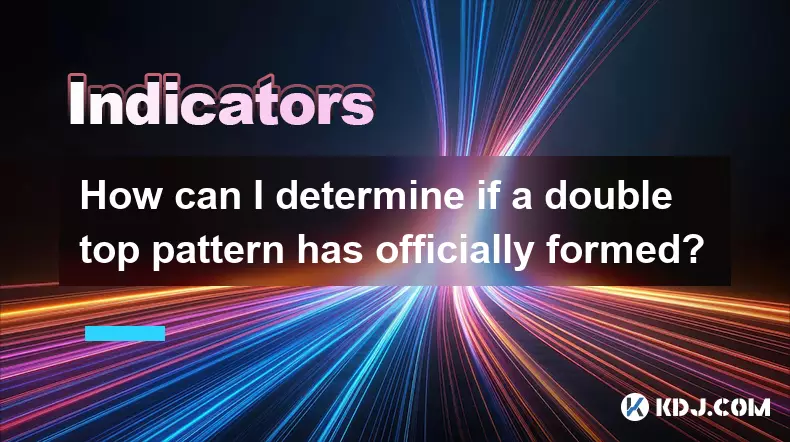
How can I determine if a double top pattern has officially formed?
Sep 21,2025 at 03:18am
Understanding the Structure of a Double Top Pattern1. A double top pattern consists of two distinct peaks that reach approximately the same price leve...
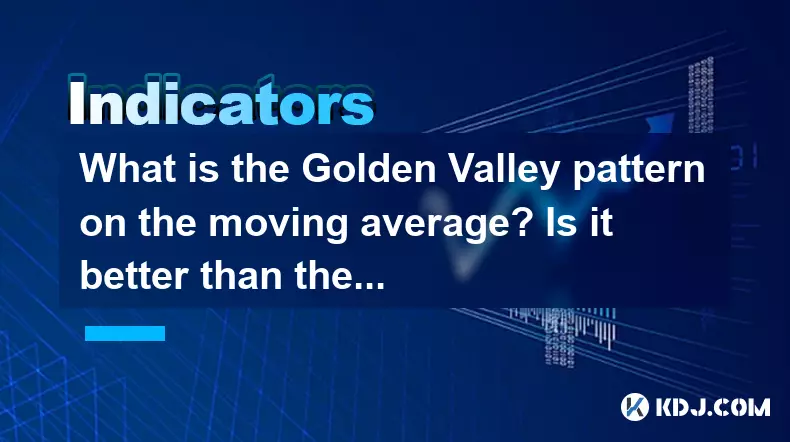
What is the Golden Valley pattern on the moving average? Is it better than the Silver Valley pattern?
Sep 21,2025 at 02:54pm
Understanding the Golden Valley Pattern in Moving Averages1. The Golden Valley pattern is a technical formation observed in cryptocurrency price chart...

What does a death cross of the RSI in the strong zone (above 50) mean?
Sep 17,2025 at 10:54pm
Understanding the Death Cross in RSI Context1. The term 'death cross' is traditionally associated with moving averages, where a short-term average cro...

What is a tower bottom candlestick pattern? Does it have a high success rate?
Sep 22,2025 at 07:18am
Tower Bottom Candlestick Pattern Explained1. The tower bottom candlestick pattern is a reversal formation that typically appears at the end of a downt...

What is a black hole pattern in the MACD indicator? Is it a cause for concern?
Sep 21,2025 at 06:54pm
Bitcoin's Role in Decentralized Finance1. Bitcoin remains the cornerstone of decentralized finance, serving as a benchmark for value and security acro...

How can I use the psychological line (PSY) to determine market sentiment?
Sep 17,2025 at 02:19pm
Understanding the Psychological Line (PSY) in Cryptocurrency TradingThe Psychological Line, commonly referred to as PSY, is a momentum oscillator used...

How can I determine if a double top pattern has officially formed?
Sep 21,2025 at 03:18am
Understanding the Structure of a Double Top Pattern1. A double top pattern consists of two distinct peaks that reach approximately the same price leve...

What is the Golden Valley pattern on the moving average? Is it better than the Silver Valley pattern?
Sep 21,2025 at 02:54pm
Understanding the Golden Valley Pattern in Moving Averages1. The Golden Valley pattern is a technical formation observed in cryptocurrency price chart...

What does a death cross of the RSI in the strong zone (above 50) mean?
Sep 17,2025 at 10:54pm
Understanding the Death Cross in RSI Context1. The term 'death cross' is traditionally associated with moving averages, where a short-term average cro...
See all articles





































































